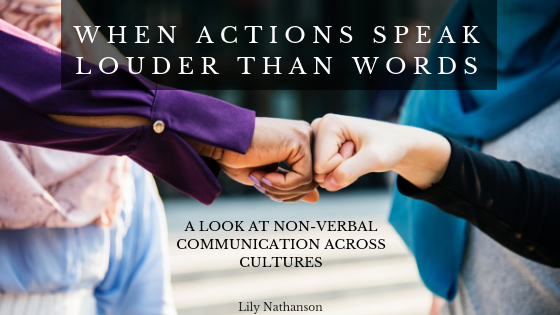Have you ever considered how much we “say” without using words? Nonverbal communication often conveys more meaning than spoken words. The same phrase could be used in completely different situations and contexts, with the ability to communicate widely varying intents. For instance, friends may say “Goodbye!” with the mutual hope of meeting again, while ex-lovers will say the same word with the opposite wish. The manner in which words are spoken and the nonverbal cues that accompany the words make all the difference.
The nonverbal communication mechanisms of paralanguage and body language can help us convey our feelings and add credibility to what we say. Paralanguage is the combination of sound, volume, voice pitch, tone, inflection, accentuation, pause, and silence that people use to emphasize what they are saying. Body language is the interplay of gestures, movements, and facial expressions in place of or along with verbal communication. Unlike words, nonverbal mechanisms are not easily translated. Furthermore, they differ tremendously across cultures.
The impact of nonverbal communication cannot be overestimated. This impact grows exponentially with intercultural relations. When we are conversing with people from different cultural and linguistic environments, nonverbal communication becomes especially significant. It has the potential to increase understanding or offend. Thus, cultivating language skills alone is not sufficient for effective intercultural communication because those with whom we seek dialogue are greatly influenced by our paralanguage and body language. Being aware of how different cultures communicate nonverbally is essential to ensuring the success of your intercultural interactions.
With so many unique cultures and varying nuances, where can we start learning to communicate effectively with people from different backgrounds? Here are a few tips.
- Show interest: Demonstrate respect for others, their languages, and things that are of significance to their cultures.
- Be cordial: Being genuinely nice will help most people warm up to you even if you cannot speak their language.
- Become aware: Do your research and learn about important language and cultural matters relative to the person with whom you are seeking dialogue, before you have a conversation with them.
People who are skilled in nonverbal communication can visit any destination and get by without being able to speak the local language. They will be more effective in their intercultural relations with others. Although our various cultures teach us distinctive manners of nonverbal expression, we are much the same in many ways. Most people, regardless of cultural background, desire to get along with others. The key to building and maintaining relationships is communication. Our sensitivity to nonverbal variances across cultures can enable us to communicate on a deeper level, enhancing our words or even making up for our lack of them.

